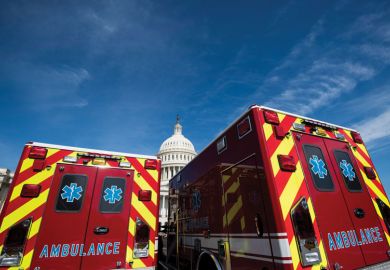Creative accounting may be the best way of keeping Australian universities afloat this year, with the sector unlikely to benefit from the government’s latest coronavirus-induced spending splurge.
Analysts want the government to maintain teaching grants at levels reflecting universities’ initial 2020 enrolments, without confiscating funding for students who subsequently drop out.
The concession would help universities facing damaging downturns in domestic fee income – a problem that could outweigh losses from international enrolments at many institutions.
Sector experts say that universities may need government intervention this year to protect their viability. And the newly announced JobKeeper Payment scheme appears unlikely to serve that function, with subsidies only available to organisations facing losses of 30 per cent or 50 per cent, depending on their size.
Experts doubt that universities will incur revenue plunges of such magnitude – and if they do, they will have trouble demonstrating it within the scheme’s timeframes.
Moreover, with casual staff comprising at least half the university workforce, huge swathes of staff may not attract the JobKeeper subsidy in any case.
Innovative Research Universities executive director Conor King said that few if any universities would qualify for JobKeeper under the scheme’s current rules. He said that universities faced a substantial decline in revenue over the year, if not the “short-term big hit” afflicting service companies for which JobKeeper had been designed.
Mr King said that if institutions were funded for their originally budgeted student numbers, it would be “a major step forward for universities, which still have to deal with the loss of international student revenue and declines in private sector research investment”.
Under normal circumstances, universities’ teaching grants – comprised of the Commonwealth Grant Scheme (CGS) and student contributions – are paid fortnightly. Payments are adjusted during the year, with a final reconciliation midway through the following year, to ensure that universities are not ultimately paid for teaching that they did not provide because students had withdrawn.
Stephen Parker, national education sector leader with consultants KPMG Australia, said that he supported the idea of this year’s CGS payments being “based on trend patterns rather than actuals”. He said that until relatively recently, universities had been funded on “student profiles” and had not lost money if their student numbers fell within modest margins.
Australian National University higher education policy expert Andrew Norton said that there was no legislated obligation on the government to “immediately correct the payments. It can leave them running at current levels if it chooses to do so.”
He said he was confident that the government would not “unnecessarily precipitate a cash crisis” by winding back funding to struggling universities. “But how they’ll sort this out over a longer period of time remains to be seen.”
Higher education consultant Justin Bokor said that the government should not offer universities substantial financial lifelines until it had taken “a look at their books” to ensure help was warranted. Many may not face substantial revenue declines before the second half of the year, he said.
Mr Bokor said an advantage of leaving teaching grants artificially high was that it required no change of budgeted direction. Another approach would be to offer an “institutional hardship payment” to a small number of struggling universities.
Register to continue
Why register?
- Registration is free and only takes a moment
- Once registered, you can read 3 articles a month
- Sign up for our newsletter
Subscribe
Or subscribe for unlimited access to:
- Unlimited access to news, views, insights & reviews
- Digital editions
- Digital access to THE’s university and college rankings analysis
Already registered or a current subscriber?










